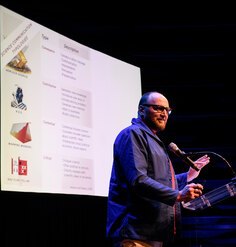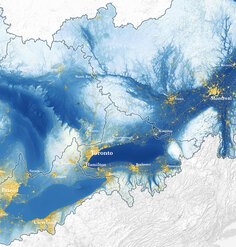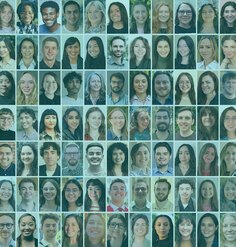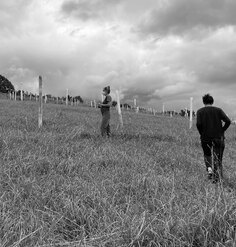Engaging the Next Generation: Rebekah VanWieren
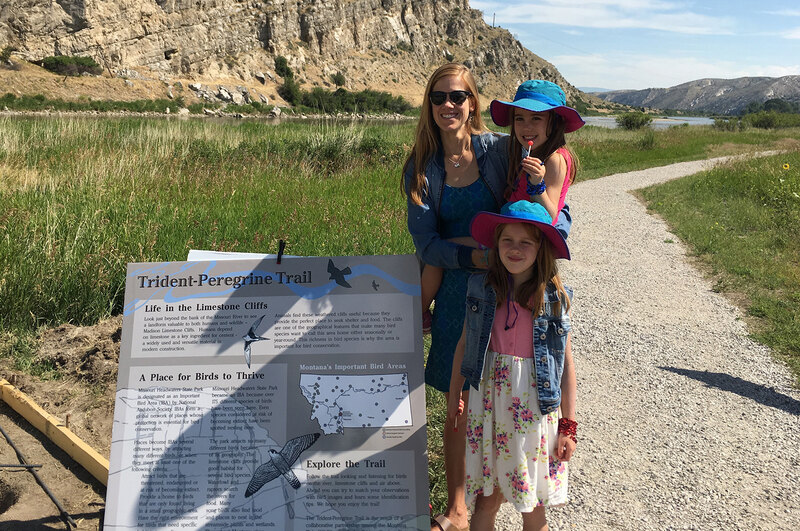
Rebekah VanWieren is a 2008 Olmsted Scholar from the University of Michigan. She now serves as an Assistant Professor of Landscape Design at Montana State University (MSU). Her research examines green infrastructure and ecological landscape design in a variety of contexts. She also enjoys spending time in the outdoors around Bozeman with her family.
What are you up to these days?
I am an Assistant Professor of Landscape Design at Montana State University (MSU) in beautiful Bozeman, Montana. I have the pleasure of teaching undergraduate students landscape representation, site engineering, site design and planning, and landscape performance. I also have the pleasure of studying questions about which I am curious and passionate. My research examines green infrastructure and ecological landscape design in a variety of contexts, from campus landscapes to brownfield regeneration and vacant land. One of my current studies investigates site planning and design for student farms, and another explores the aesthetics of bioinfiltration in semi-arid contexts. I am also loving exploring the wild outdoors and raising two mountain girls who love to draw and dig in the dirt!
What drew you to Montana?
I was already acquainted with Montana from past adventures, so I was excited when an opportunity arose at MSU. Our program is situated in Horticulture and Plant Sciences in the College of Agriculture, which fits well with my training and orientation to the field. It doesn’t hurt that Bozeman is an outdoor recreation paradise and phenomenal community. Professors no longer ride to campus on horseback, but we can still be hiking national forest trails, fishing blue-ribbon rivers, or skiing world-class mountains in 10-20 minutes from town. I also love the incredibly diverse set of stakeholders here who are passionate about public lands and contiguous ecosystems. It’s impressive how hunters, growers, hikers, cyclists, anglers, birders, dirt bikers, snowmobilers, and backcountry skiers can come together to preserve the Montana landscapes. The ‘Big Sky’ truly is inspiring. I also get to have lunch with my husband, who is also on faculty. As faithful Michigan Wolverines, our only psychological hurdle was working at an “MSU”!
We are certainly not the only ones to discover this gem in the Treasure State. Bozeman is currently the fastest growing city in the U.S. for its size, and student enrollment at MSU has grown significantly over the past 10 years. So, just as nearby Yellowstone and Glacier National Parks have faced challenges managing visitor growth, the Bozeman area is pressured by booming development that is accompanied by the loss of open space and agricultural land, water scarcity risks, and housing affordability issues. Landscape architecture has vital contributions to make to these discussions, making Bozeman a thrilling place to be in our field.
Why did you choose a career path in academia?
I loved being a practitioner, but I was eager to return to academia for the opportunity to work with students and help shape the way they think about landscape. I was fortunate at the University of Michigan to be mentored and inspired by incredible teacher-scholars, like Joan Nassauer, Rachel Kaplan, and Bob Grese, who demonstrated how educators can make a lasting impact by developing sustainability-minded practitioners. Their example ignited my own passion for this career path. Fostering student discovery in the meaning and impact of landscape design is one of my favorite things about being a professor. Students energize my work and drive me to continually learn and investigate. I have loved the variety in academic work that engages skills and knowledge from both sides of my brain on a daily basis; something that drew me to landscape architecture in the first place.
I am particularly passionate about facilitating student engagement with the local community through service-learning. With just over 1 million people in the fourth-largest U.S. state, it would be an understatement to say that much of Montana is rural. Many of our agricultural, mountain, and Native American communities do not have large financial resources to invest in designing solutions to their sustainability challenges, so we have an opportunity to make a real impact through student projects. These also have a tremendous impact on our students. For example, we are currently working with the Fort Peck Tribes and the EPA to utilize green infrastructure in the revitalization of vacant land in Poplar, MT. Our land-grant mission at MSU inspires me to seek new and innovative ways of integrating teaching, engagement, and scholarship.
What does the future of the profession look like to you?
I hope to see enhanced collaboration between practitioners and researchers to maximize our impact and awareness of the value of our contributions. I also hope that both educators and practitioners will continue to prioritize landscape performance, climate change resiliency, and social equity, and seek outcomes that improve ecological and human health. I believe that innovations in sensor technology and availability of data will continue shaping landscape performance research, but we still need to consider the role of beauty and the human experience of these landscapes to ensure that our built work is as holistically sustainable as possible. In addition, a lot of climate change research and design has examined “wet” scenarios like sea-level rise, but further research is also needed for “dry” scenarios like changing fire regimes and water scarcity resulting from extreme drought conditions. I hope that municipalities and organizations will continue to understand how meaningful landscape architecture is to community ecological and social health and continue to invest heavily in it, but I suspect that we will need to rely more heavily on citizen volunteers to advocate, plan, construct, and maintain plant-heavy projects. It is therefore incumbent on us to effectively communicate the importance of our work and to educate stakeholders in landscape maintenance strategies.
What piece of advice would you give to emerging professionals today?
I would encourage professionals to get our hands dirty, literally! We have the opportunity to make a difference for our communities and ourselves by planting trees, weeding gardens, laying woodchips on trails, pulling invasive species, cleaning trash along waterways, or participating in citizen science. The value of this is twofold. First, we reap the health and well-being benefits of nature and the great outdoors, and of contributing value to our communities. Second, I think it makes us better landscape architects because hands-on work bolsters our practical skills (e.g., in installation processes and landscape care), professional awareness, and firsthand experience of landscape.
Where do you want to be 10 years from now?
I hope to be a full professor at the first accredited Landscape Architecture program in the state of Montana, here at MSU. We are currently in the early stages of the LAAB accreditation process, which is an exciting time. I hope that in 10 years I am continually pursuing new opportunities for innovative and impactful teaching and research, and still keeping up with my students on the slopes!
Any opinions expressed in this interview belong solely to the author. Their inclusion in this article does not reflect endorsement by LAF.
